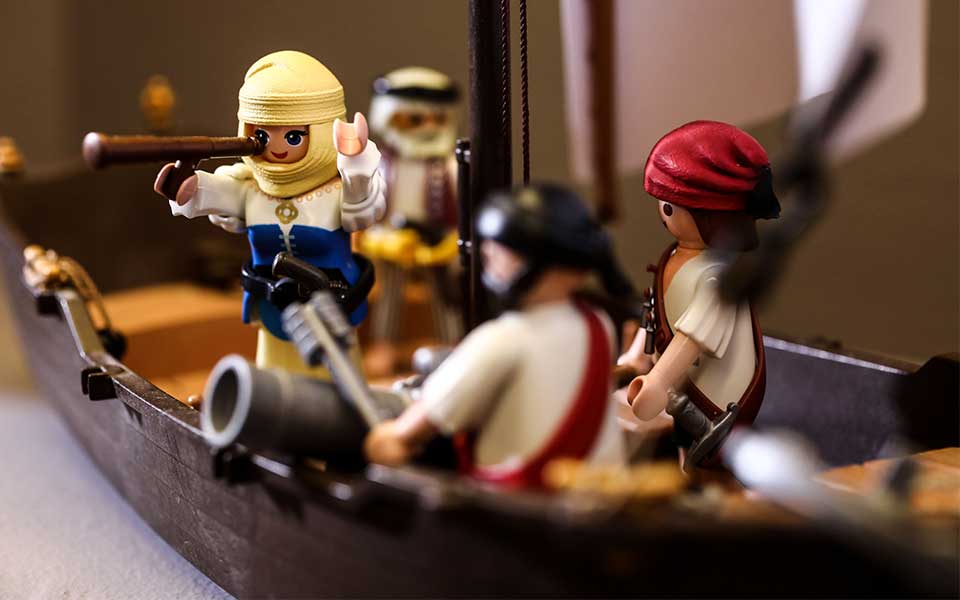It’s Holy Week of 1819. We are in the town of Parga on the western coast of Greece, which in 1814 had passed to British control. But Ali Pasha, the Ottoman ruler of Ioannina who had been trying for years to conquer the castle town to no avail, finally found another way to claim it: he purchased it from the British for the price of 150,000 pounds.
The deal was struck with the Lord High Commissioner of the Ionian Islands, Sir Thomas Maitland, known for his pro-Ottoman leanings (it was not by chance that he was known by Greeks of the time as Sultan Thomas) and signed in Ioannina on May 17, 1817.
The buyer stipulated the condition that the town be abandoned by its residents.
And on Good Friday the deadline arrives for Ali Pasha’s demand. The roads are teeming: women hurry distraught with their babies in their arms, elderly residents weep on their doorsteps, men load beasts of burden with whatever can be carried.
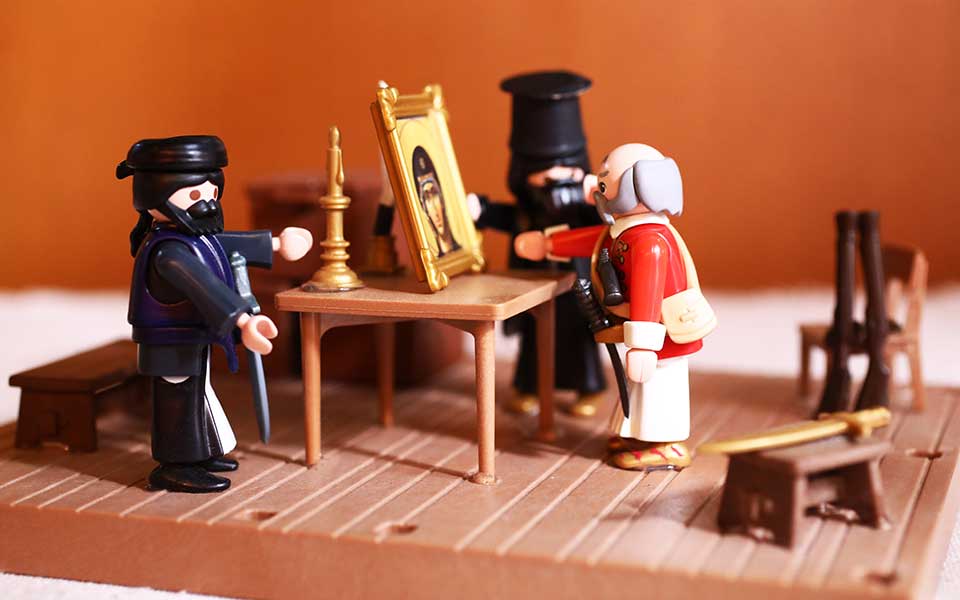
© Nikos Kokkalias
The Pargans depart – by boat, some for Corfu and others for Paxi – but they refuse to leave behind the bones of their ancestors in their conquered land. So they exhume them, and they burn them in the square in order to take with them, at the very least, a few ashes.
All of these things take place before my eyes. No, not because I have a time machine. I am on the first floor of the National Historical Museum on Stadiou Street, and “The Refugees of Parga” is one of the stories being told at a soon-to-be-opened exhibition depicting scenes from the Greek War of Independence through the medium of… Playmobil.
The exhibition will form part of the series of events titled “1821: Today’s Echoes”, part of the commemorations the museum is organizing to mark the 200 years since the 1821 Greek War of Independence.
The aim is to present an innovative, impressive and historically accurate take on this period. It will be geared primarily at kids, but adults will likely also find much to appreciate. And to judge by the delight that the Playmobil figurines and accessories – and the dioramas as a whole – brought to photographer Nikos Kokkalias and myself, I’d happily bet on the latter.
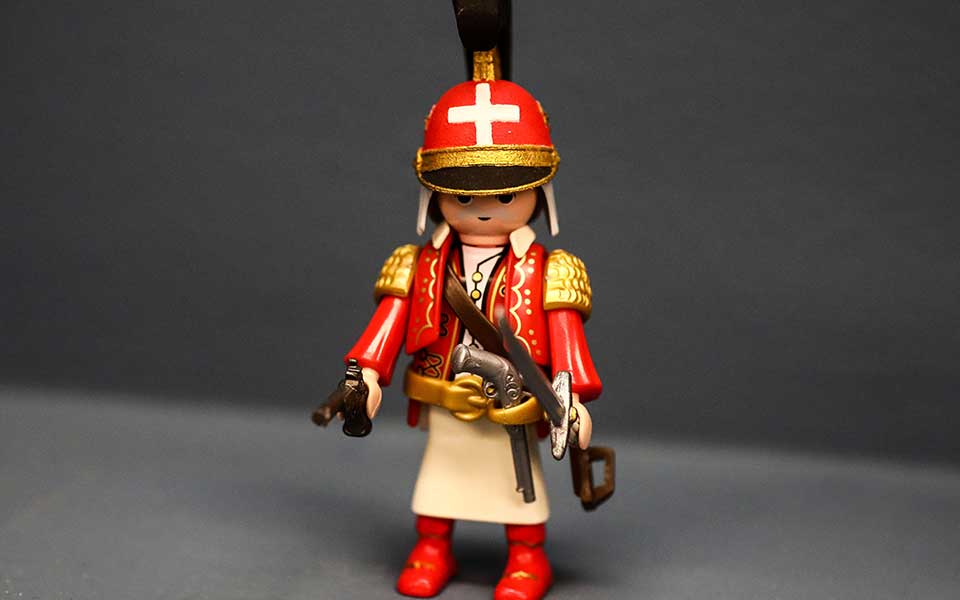
© Nikos Kokkalias
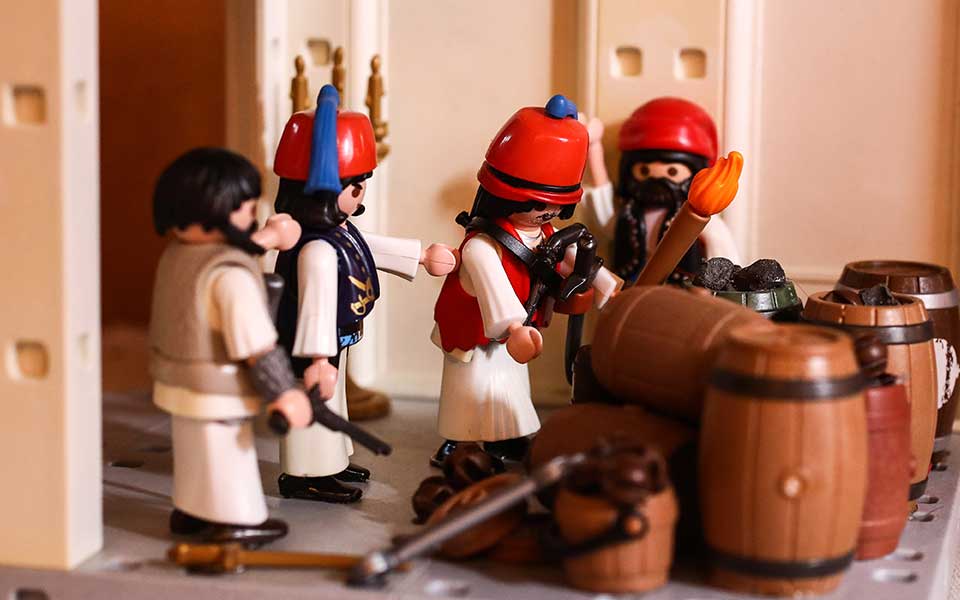
© Nikos Kokkalias
19th Century Immersion
The opening of the exhibition will take place on October 13 in the peristyle of the main hall of the National Historical Museum, and it will last until May of 2020. It will include more than twenty small and large dioramas, with a total of almost 1,500 figurines depicting scenes from daily life in Greece in the early 19th century and events from the 1821 War of Independence.
The secret oaths of the Filiki Eteria, the flight of the Pargans, Alexander Ypsilantis crossing the Prut river, the Siege of Tripolitsa and a naval battle between the Greek and Ottoman fleets, the death of the priest Papaflessas at Maniaki and the kiss from his foe Ibrahim, the Exodus from Messolongi, daily life at a travelers’ inn – these are just some of the scenes are being brought to life for visitors for the first time.
At the same time, 80-plus leading figures of the War of Independence – Greeks, philhellenes, and Ottomans – men and women who played decisive roles in the events of that turbulent period will feature as Playmobil figures (presented with short biographies).
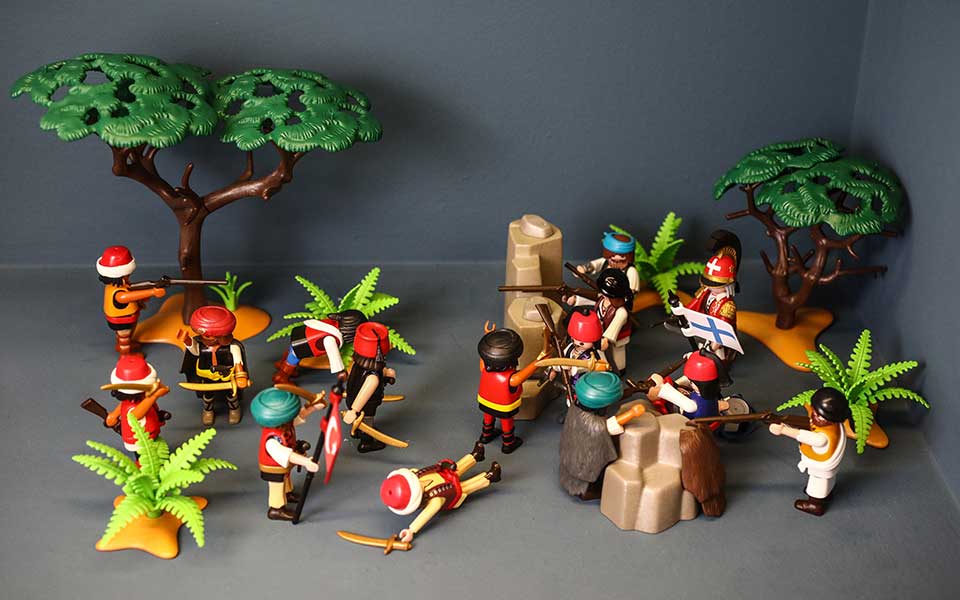
© Nikos Kokkalias
The design of the exhibition is being overseen by the National Historical Museum’s curators: Natassa Kastriti (art historian), Panagiota Panariti (archaeologist) and Reggina Katsimardou (historian).
“The idea was born thanks to the work of Petros Kaminiotis. The background for the composition of the dioramas and the rendering of key figures of the revolution as Playmobil figures came chiefly through works of art – etchings and paintings – from the early 19th century from the museum’s collection and beyond,” they say.
And so the beginning of the Greek Revolution is placed in the Peloponnese, with a recreation of the classic scene with Palaion Patron Germanos.
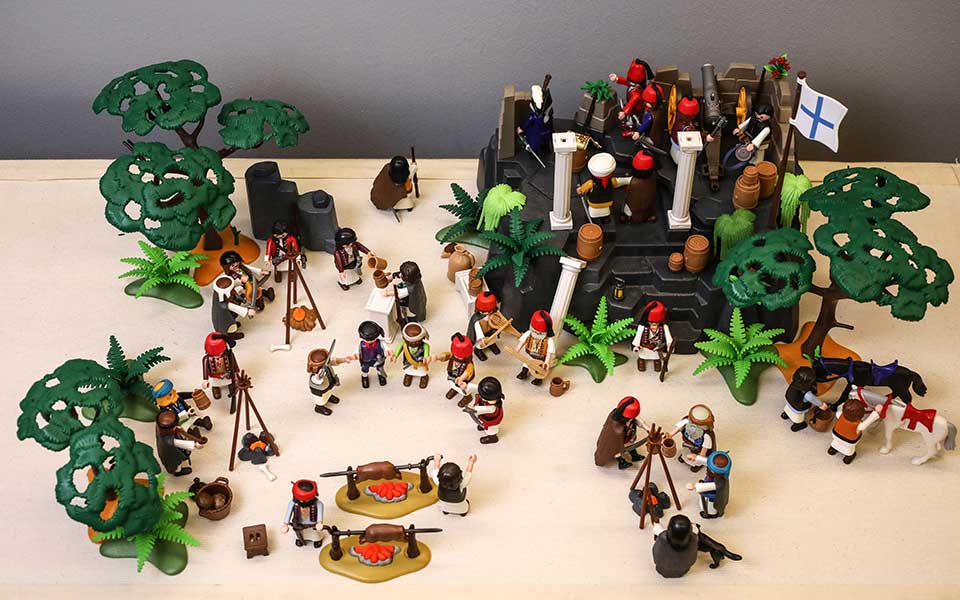
© Nikos Kokkalias
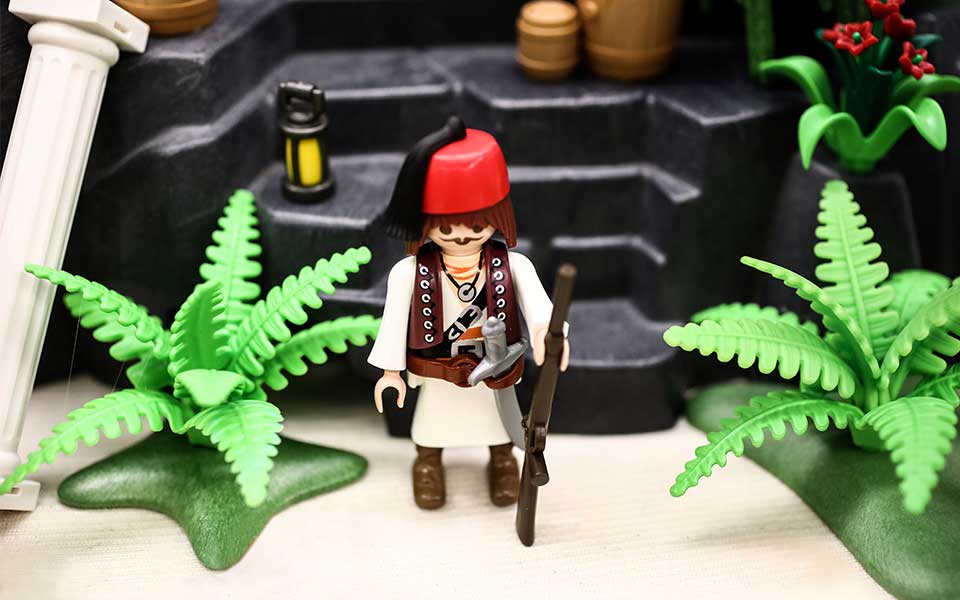
© Nikos Kokkalias
“So you follow the ‘line’ of school textbooks?” I ask the three curators, referring to the debate about the beginning of the War of Independence. “The etchings from the period are those which informed the school textbooks,” explains Natassa Kastriti. “We, on the one hand, don’t seek to ‘correct’ history, but at some points we diverge from the usual approach to the events, seeking to provide visitors with food for thought.”
The exhibition will begin with the section “Admiration for Ancient Greece and Philhellenism” and a representation of the Parthenon. However it will not be depicted as a mosque (as it was during the years of the Ottoman occupation) or damaged by the bombing by Francesco Morosini, but as it was in antiquity.
“In it’s idealized state, in other words, because, in any case, that is how they insisted on seeing it, with the eyes of their imagination, the philhellenes of the time who would visit it,” says Panagiota Panariti. The exhibition ends with the assassination of the nascent Greek state’s first governor, Ioannis Kapodistrias in 1831 in Nafplio.
Responsible for the construction of the dioramas are the collectors Giorgos Aggelidis, Denis Vaggopoulos, Angelos Giakoumatos and Vasiliki Fati, while Stelios Mylonas is behind the creation of the Playmobil representations of historical figures. All worked as volunteers, without receiving any payment for their efforts.
The exhibition is being sponsored by Playmobil, which provided many accessories necessary for the creations.
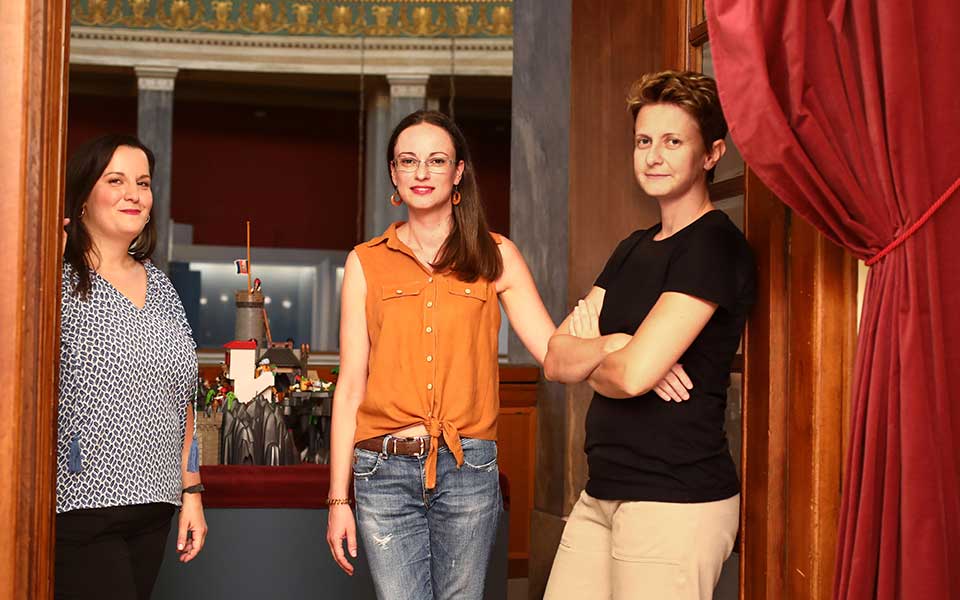
© Nikos Kokkalias
And so an exhibition of discovery, but also one that is whimsical is opening the season for the National Historical Museum. “We see it as an opportunity to change the public image of our museum,” says Reggina Katsimardou. “One the one hand the schoolchildren who come every year do come to know it, but we don’t want to be connected only with the – at times boring for kids – obligatory school field trips. We want to show – both young and old – that history can have a fun side to it. And that we are not so conservative in the end!”
The exhibition The Greek Revolution in Playmobil Dioramas will be open to the public from October 13 at the National Historical Museum, (13 Stadiou, Syntagma). The specially created figures and the dioramas on display are artistic creations and not original Playmobil collections. They are not available for sale either at the museum or in shops.

